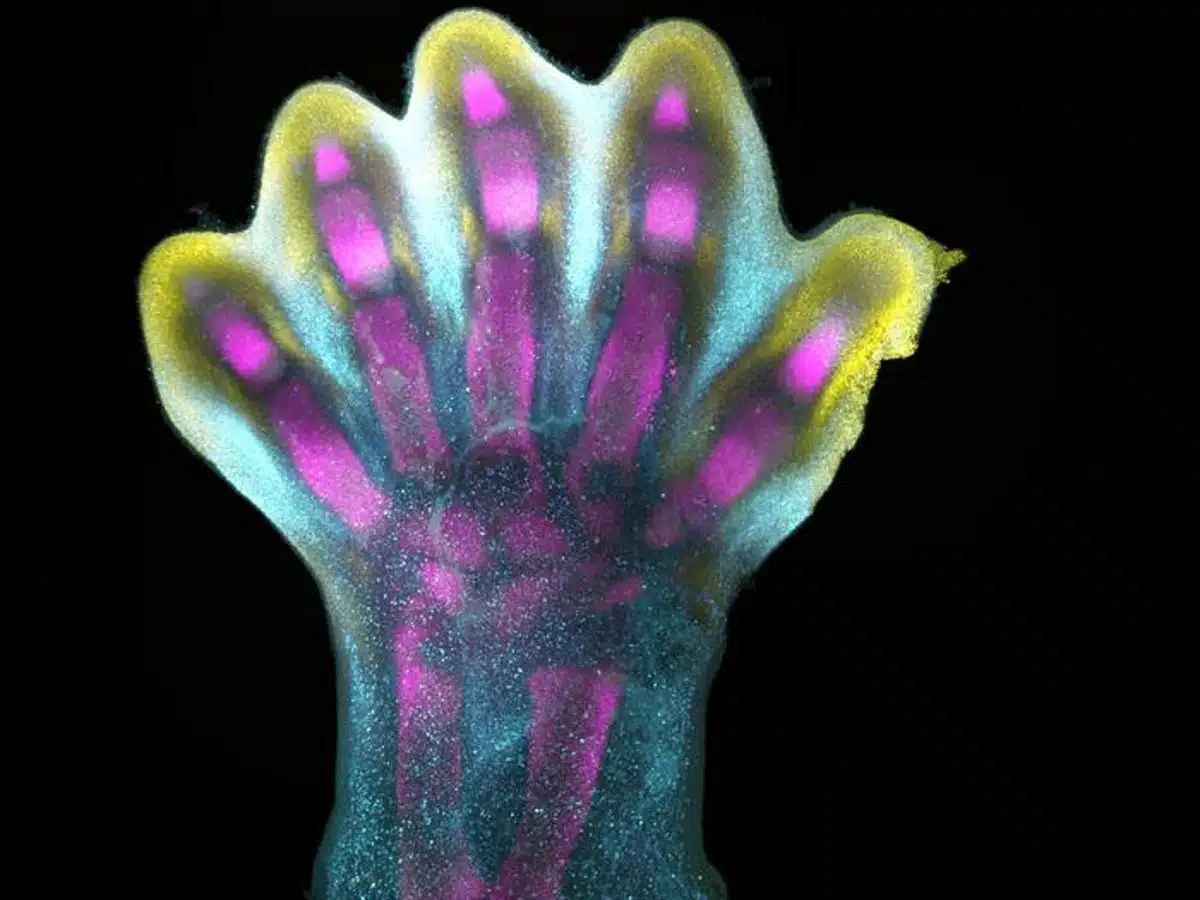Human limb development “live”

Source: Zhang et al. (2023)
Despite their importance in our daily lives, we do not give much importance to our hands or feet, and even less at how they came to be. Even if roughly known, the process of human limb development had never been observed at single cell level resolution.
Recently, Sarah Teichmann and colleagues have developed an atlas of human limb development at a resolution never seen before 1. This is important not only to normal limb development, but to better understand when things go wrong, resulting in congenital limb malformations.
Our limbs start developing from a shapeless mass of cells on the side of our bodies, and after about eight weeks, they start resembling legs and arms and are formed by different cell types. Although this process had been previously investigated in animals like chicken and mice, what happens in humans at these stages was unclear.
In this research, the genetic basis of limb development was studied in human tissues from 5 to 9 weeks of development by tracing gene expression in the limb bud. In addition, staining the tissues with antibodies helped investigate the behaviour of different cell populations in the developing bud.
Their findings indicate the involvement of particular genes, including some associated with limb syndromes such as brachydactyly – short fingers and toes – and polysyndactyly – extra digits, when mutated. Further, they also demonstrated that fingers and toes actually result from separation from the main initial bud, and not from growing outwards.
This seminal work adds to the efforts of other teams to fully map the human body with single cell resolution and pave the path to future research on the specific mechanisms and cell populations involved in limb development. In addition, a better understanding of the disruptions leading to malformation may inform drug development.
References
- Zhang, B., He, P., Lawrence, J.E.G. et al. (2023) A human embryonic limb cell atlas resolved in space and time Nature doi: 10.1038/s41586-023-06806-x ↩